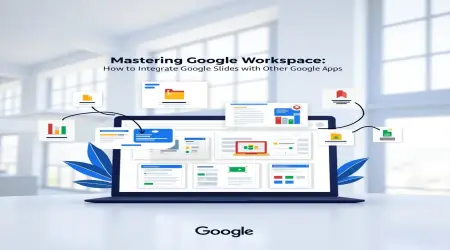Introduction: The Evolution of IDEs and Google’s Project IDX
The Integrated Development Environment (IDE) landscape has transformed dramatically over the past decade. From the rise of Visual Studio Code to the robust ecosystems of JetBrains, developers have more choices than ever. Enter Google’s Project IDX, a cloud-based IDE launched to redefine how developers code, collaborate, and deploy in 2025. But is Project IDX truly a game-changer? This post by Temploop explores its features, comparisons, use cases, and potential to reshape the development world.
In 2025, the demand for scalable, accessible, and AI-powered tools is at an all-time high. Project IDX promises to meet these needs with its cloud-first approach, seamless integrations, and Google’s AI prowess. This article dives deep into its capabilities, challenges, and real-world applications.
What is Google’s Project IDX? A Detailed Overview
Project IDX is Google’s ambitious attempt to streamline software development through a browser-based, cloud-powered IDE. Launched in 2023 and significantly enhanced by 2025, it aims to simplify workflows for developers of all levels. Unlike traditional IDEs that rely on local setups, Project IDX operates entirely in the cloud, offering instant access to pre-configured environments, AI-assisted coding, and real-time collaboration.
Key highlights of Project IDX in 2025 include:
Cloud-Native Architecture: No local installation required; access your workspace from any device with a browser.
AI Integration: Powered by Google’s Gemini AI, it offers code suggestions, debugging, and automation.
Framework Flexibility: Supports popular languages (JavaScript, Python, Go, etc.) and frameworks (React, Angular, Flask, Django).
Built-In Tools: Includes version control, terminal access, and preview environments for rapid testing.
By eliminating setup complexities, Project IDX caters to freelancers, startups, and enterprises alike. Its browser-based nature ensures compatibility across Windows, macOS, Linux, and even Chromebooks, making it a versatile choice in 2025’s diverse tech ecosystem.
Key Features of Project IDX in 2025
Cloud-Based Development Environment
Project IDX’s cloud-first design is its cornerstone. Developers can spin up a fully configured workspace in seconds, complete with dependencies, libraries, and runtimes. This eliminates the “works on my machine” problem, ensuring consistency across teams. In 2025, its integration with Google Cloud Platform (GCP) allows seamless scaling for resource-intensive projects, from machine learning models to full-stack applications.
AI Integration with Gemini
Google’s Gemini AI powers Project IDX’s intelligent features. From auto-generating boilerplate code to suggesting optimizations, Gemini reduces development time significantly. In 2025, it supports context-aware debugging, identifying errors and proposing fixes in real-time. For example, a Python developer encountering a runtime error receives tailored suggestions, complete with documentation links, boosting productivity.
Multi-Language and Framework Support
Project IDX supports a wide array of programming languages and frameworks, making it a one-stop shop for diverse projects. Whether you’re building a React front-end, a Django back-end, or a Go microservice, IDX provides pre-configured templates. In 2025, Google has expanded support for niche languages like Rust and Kotlin, appealing to specialized developers.
Collaboration Tools
Real-time collaboration is a standout feature. Teams can edit code simultaneously, share previews, and communicate via integrated chat. This mirrors tools like GitHub Codespaces but with tighter integration into Google’s ecosystem. For remote teams in 2025, this fosters seamless workflows, reducing friction in distributed development.
Cross-Platform Accessibility
With no local setup required, Project IDX is accessible on any device with a modern browser. This democratizes development, enabling coders in resource-constrained environments to build sophisticated applications. In 2025, its mobile-friendly interface allows basic editing and debugging on tablets and smartphones, a boon for on-the-go developers.
How Project IDX Compares to Other IDEs in 2025
To assess whether Project IDX is a game-changer, we compare it to leading IDEs in 2025.
Feature | Project IDX | VS Code | IntelliJ IDEA | GitHub Codespaces |
|---|---|---|---|---|
Cloud-Based | Yes | Partial (via extensions) | No | Yes |
AI Integration | Gemini (advanced) | Copilot (GitHub) | JetBrains AI Assistant | Copilot |
Collaboration | Real-time, Google Docs-style | Limited (Live Share) | Limited | Real-time |
Framework Support | Broad (React, Flutter, etc.) | Extensive (via extensions) | Java-focused, others supported | Broad |
Cost | Free (with premium tiers) | Free | Paid (with free tier) | Paid |
Offline Support | Beta (limited) | Full | Full | Limited |
Ease of Setup | Instant (browser-based) | Requires local setup | Requires local setup | Instant (cloud-based) |
VS Code
Visual Studio Code remains the gold standard for many developers, thanks to its extensibility and open-source community. However, VS Code requires local installation and manual configuration, which can be time-consuming. Project IDX’s cloud-based setup and AI-driven features give it an edge for rapid prototyping, though VS Code’s vast extension marketplace remains unmatched for customization.
JetBrains IntelliJ IDEA
IntelliJ IDEA excels for Java and Kotlin developers, offering deep language-specific insights. However, its resource-heavy nature and subscription cost deter smaller teams. Project IDX, being free (with premium tiers), provides a lighter alternative with comparable AI capabilities, though it lacks IntelliJ’s advanced refactoring tools.
Eclipse
Eclipse, a veteran IDE, is still relevant for enterprise Java projects. Its clunky interface and steep learning curve, however, make it less appealing in 2025. Project IDX’s modern UI and cloud architecture outshine Eclipse for most use cases, especially for web and mobile development.
GitHub Codespaces
GitHub Codespaces is a direct competitor, offering cloud-based development with tight Git integration. While Codespaces excels for open-source projects, Project IDX’s Gemini AI and Google Cloud integrations provide a more robust ecosystem for full-stack development. In 2025, IDX’s free tier also makes it more accessible than Codespaces’ paid model.
Edge: Cursor leads in AI precision, but IDX’s all-in-one approach appeals to beginners.
Ecosystem and Support
- VS Code: Boasts a massive extension library and community.
- Cursor: Smaller, AI-centric community.
- GitHub Codespaces: Leverages GitHub’s vast ecosystem.
- Project IDX: Tied to Google’s tools (Firebase, Cloud), with a growing but limited community.
Edge: VS Code dominates flexibility, while IDX suits Google-centric workflows.
Real-World Performance: What Developers Say
Feedback from 2025 highlights Project IDX’s strengths and shortcomings.
Strengths
- Speed: Projects load instantly, with emulators starting “effortlessly,” as Ibaba noted, outpacing local setups.
- Scalability: Cloud resources handle large projects without local strain.
- Ease of Use: Zero-setup environments and AI-generated code accelerate prototyping.
Weaknesses
- Internet Reliance: No offline mode limits its use in low-connectivity areas.
- AI Quirks: Gemini’s errors, like syntax mistakes, require manual fixes.
- Emulator Hiccups: Some developers report crashes with specific libraries, necessitating workarounds.
Example: A Flutter developer praised IDX for deploying an app to Firebase in minutes, but struggled with emulator stability when integrating external APIs.
Getting Started with Project IDX
Ready to explore? Here’s how to dive in.
Setup Steps
- Visit studio.firebase.google.com and sign in with a Google account.
- Choose a template (e.g., Flutter, React) or import a GitHub repository.
- Start coding—the cloud handles dependencies and setup.
- Use Gemini AI for suggestions or debugging.
Ideal Scenarios
- Mobile developers testing Android/iOS apps.
- Web developers prototyping React or Next.js projects.
- Teams collaborating on Firebase-backed applications.
Challenges to Consider
Project IDX isn’t flawless. Key limitations include:
- Security: Cloud storage raises privacy concerns, especially for sensitive code.
- Lock-In: Heavy Google integration may deter those using diverse tools.
- Learning Curve: While intuitive, its AI and emulators take time to master.
Real Developer Stories
- Freelancer: A React developer cut project time by 20% using IDX’s templates and collaboration tools.
- Student: A budget-conscious coder built a Python app without upgrading their laptop, thanks to cloud resources.
Why Project IDX Could Be a Game-Changer
Democratizing Development
By removing barriers like hardware limitations and setup complexity, Project IDX makes coding accessible to beginners and professionals alike. In 2025, its low-cost entry point (free tier with optional upgrades) empowers students and hobbyists to experiment without investing in powerful machines.
Streamlining Workflows
IDX’s all-in-one environment—code editor, terminal, preview, and collaboration—reduces context-switching. Developers can focus on coding rather than managing tools. In 2025, its AI-driven automation further accelerates tasks like testing and deployment, saving hours per project.
Scalability for Teams
For startups and enterprises, IDX’s cloud infrastructure scales effortlessly. Teams can allocate resources dynamically, ensuring performance during peak development cycles. Its collaboration tools also support distributed teams, a critical feature in 2025’s hybrid work environment.
Cost-Effectiveness
Unlike premium IDEs like IntelliJ or paid cloud solutions like Codespaces, Project IDX’s free tier covers most individual needs. In 2025, its integration with GCP allows cost-efficient scaling, making it attractive for budget-conscious startups.
Challenges and Limitations of Project IDX
Internet Dependency
As a cloud-based IDE, Project IDX requires a stable internet connection. In 2025, this remains a challenge in regions with unreliable connectivity, limiting its adoption among developers in underserved areas.
Privacy and Data Security
Hosting code on Google’s servers raises concerns about data privacy. While Google implements robust security measures, enterprises handling sensitive data may hesitate to adopt IDX. In 2025, Google offers on-premises options for premium users, but this adds complexity.
Learning Curve
Despite its user-friendly interface, mastering IDX’s AI tools and cloud features takes time. Developers accustomed to traditional IDEs may face a transition period, particularly when leveraging advanced Gemini capabilities.
Integration Gaps
While IDX integrates seamlessly with Google Cloud, support for other cloud providers like AWS or Azure is limited in 2025. This could deter teams with existing infrastructure on competing platforms.
Use Cases: Who Benefits Most from Project IDX?
Freelance Developers
Freelancers juggling multiple projects benefit from IDX’s quick setup and framework support. Its AI tools help deliver high-quality code faster, while the free tier keeps costs low.
Startups and Small Teams
Startups with limited budgets appreciate IDX’s scalability and collaboration features. In 2025, its ability to handle full-stack development in one platform reduces the need for multiple tools.
Enterprise Development
Large organizations leverage IDX for rapid prototyping and team collaboration. Its GCP integration supports complex deployments, though privacy concerns may require custom solutions.
Educational Institutions
IDX’s accessibility makes it ideal for teaching. In 2025, universities use it to introduce students to coding without requiring expensive hardware, leveling the playing field.
Tips for Using Project IDX Effectively
Setting Up Your Project IDX Workspace
Start by selecting a template for your project (e.g., React, Flask). Customize your environment with necessary dependencies via the built-in terminal. Save your configuration to reuse across projects, optimizing setup time.
Optimizing for AI-Assisted Coding
Leverage Gemini’s suggestions by enabling auto-complete and debugging modes. Train the AI by providing context (e.g., project goals) to improve its accuracy. Regularly review AI-generated code to ensure alignment with best practices.
Collaborating in Real-Time
Invite team members via email or shareable links. Use the chat feature to discuss changes and assign tasks. Enable version control to track contributions, ensuring smooth collaboration.
Leveraging Templates for Rapid Prototyping
Use IDX’s library of templates to jumpstart projects. Customize them to match your requirements, then deploy previews to test functionality. This approach accelerates development cycles.
The Future of Project IDX: Predictions for 2026 and Beyond
In 2026, Project IDX is poised to expand its AI capabilities, potentially integrating generative AI for UI design and automated testing. Enhanced offline support could address connectivity issues, while deeper integrations with AWS and Azure may broaden its appeal. Google’s focus on open-source contributions could also foster a vibrant community, rivaling VS Code’s ecosystem.
Case Studies: Real-World Applications of Project IDX
Startup Success: A fintech startup used IDX to build a React-based app, leveraging AI for rapid prototyping. The team deployed to GCP in two weeks, saving 30% on development costs.
Educational Impact: A university adopted IDX for its CS101 course, enabling 500 students to code on Chromebooks. Engagement rose 40% due to the platform’s accessibility.
Enterprise Efficiency: A retail giant used IDX for a microservices project, reducing setup time by 50% with pre-configured environments.
Expert Insights: What Developers Are Saying About Project IDX
“Project IDX’s AI is a game-changer for solo developers. It catches errors I’d miss and speeds up my workflow.” – Sarah L., Freelance Web Developer
“The collaboration tools are fantastic, but I wish offline support was better for remote areas.” – Rajesh K., Startup CTO
“IDX’s cloud scalability is unmatched, but enterprises need clearer privacy guarantees.” – Emily T., Enterprise Architect
FAQs About Google’s Project IDX
Q: Is Project IDX free in 2025?
A: Yes, it offers a robust free tier with optional premium plans for advanced features.
Q: Can I use Project IDX offline?
A: Limited offline support exists in 2025, but a stable internet connection is recommended.
Q: How does Project IDX handle data security?
A: Google employs encryption and compliance standards, with on-premises options for enterprises.
Q: Is Project IDX suitable for beginners?
A: Absolutely, its templates and AI make it beginner-friendly, though advanced features require learning.
Conclusion: Is Project IDX the IDE of the Future?
Google’s Project IDX is a formidable contender in 2025’s IDE landscape. Its cloud-based architecture, AI integration, and collaboration tools position it as a versatile solution for developers, startups, and educators. While challenges like internet dependency and privacy concerns persist, its cost-effectiveness and scalability make it a compelling choice. As Google continues to refine IDX, it has the potential to redefine how we code in the years ahead.










